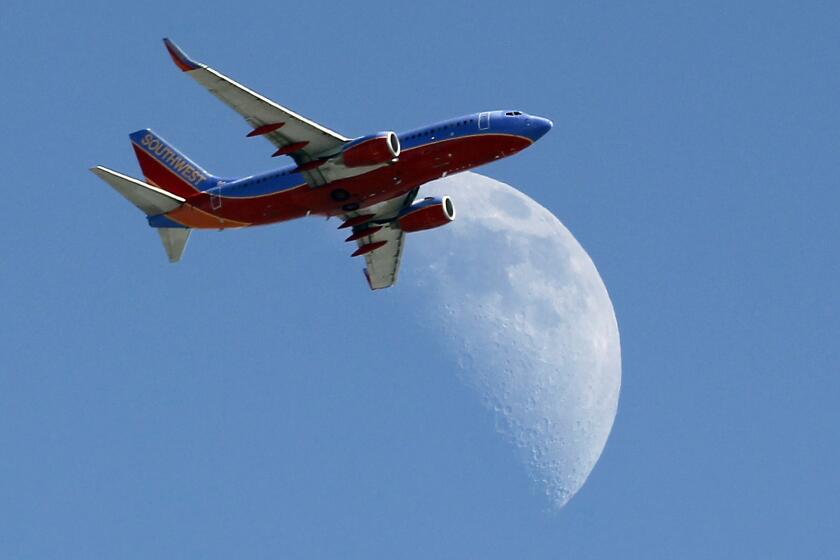What Does It All Mean?
As ever, Los Angeles is a city attempting to discover and define itself. That is one message from Tuesday’s municipal election in which voters replaced veteran City Council President Pat Russell with planner Ruth Galanter and elected Nate Holden to an open council seat over Homer Broome Jr., the candidate of Mayor Tom Bradley.
There were two other instant interpretations of the election results: (1) They were a blow to Bradley’s prestige, and spelled even more potential problems for his desire to win a fourth term in 1989, and (2) there is a growing revolt against growth in Los Angeles.
For the record:
12:00 a.m. June 7, 1987 For the Record
Los Angeles Times Sunday June 7, 1987 Home Edition Opinion Part 5 Page 4 Column 4 Letters Desk 1 inches; 30 words Type of Material: Correction
A Times editorial (June 5) erred in saying that Mayor Tom Bradley would be seeking a fourth term if he ran for reelection in 1989. Bradley currently is serving his fourth term and would be running for a fifth in 1989.
The mayor must be keenly disappointed. Russell was a close and important ally in City Hall. And Broome was virtually hand-picked by Bradley. The turnover on the council in recent years reflects the rapid changes occurring in the city and denies Bradley the built-in support that he once enjoyed from the lawmakers on critical issues.
But it would be premature to try to read the fate of the mayor’s future in the tea leaves left by the small minority of eligible voters who botheredto vote on Tuesday. It is overly simplistic, for instance, to view Russell’s defeat entirely as an expression of no-growth versus growth. It is clear, however, that concern over development, and its attendant problems of traffic and the environment, has emerged as a paramount political issue.
The question now is whether Los Angeles will continue to develop, and develop better, as a cohesive city or as a multi-celled Rorschach blobof principalities. Council members are elected from districts, but once in office they also assume a responsibility to the city at large. Los Angeles cannot afford a Balkanization under which individual segments of the community can declare: “We’ve got ours. No more growth here.”
Los Angeles used to be mocked as a hundred suburbs in search of a city. That has changed with the revitalization of downtown, with the emergence of the city as a major economic and cultural anchor of the Pacific Rim and through the sort of cooperation that brought about the 1984 Olympic Games. What is lacking now, however, is a clear vision of where the city is moving in the next decade or two, and how it will cope with critical problems like traffic, air pollution, housing the homeless, waste disposal, economic advancement and enhancement of the quality of life.
The key is daring, effective planning and bold, long-term action on the scale of that which in the short run made the Olympics go so smoothly,so that Los Angeles moves into the future with confidence and broad public support rather than being overwhelmed by an onrushing 21st Century. The leadership, of course, must come from City Hall--specifically, the office of the mayor. This is the challenge that Tuesday’s election presents to Mayor Bradley.
Start your day right
Sign up for Essential California for news, features and recommendations from the L.A. Times and beyond in your inbox six days a week.
You may occasionally receive promotional content from the Los Angeles Times.



